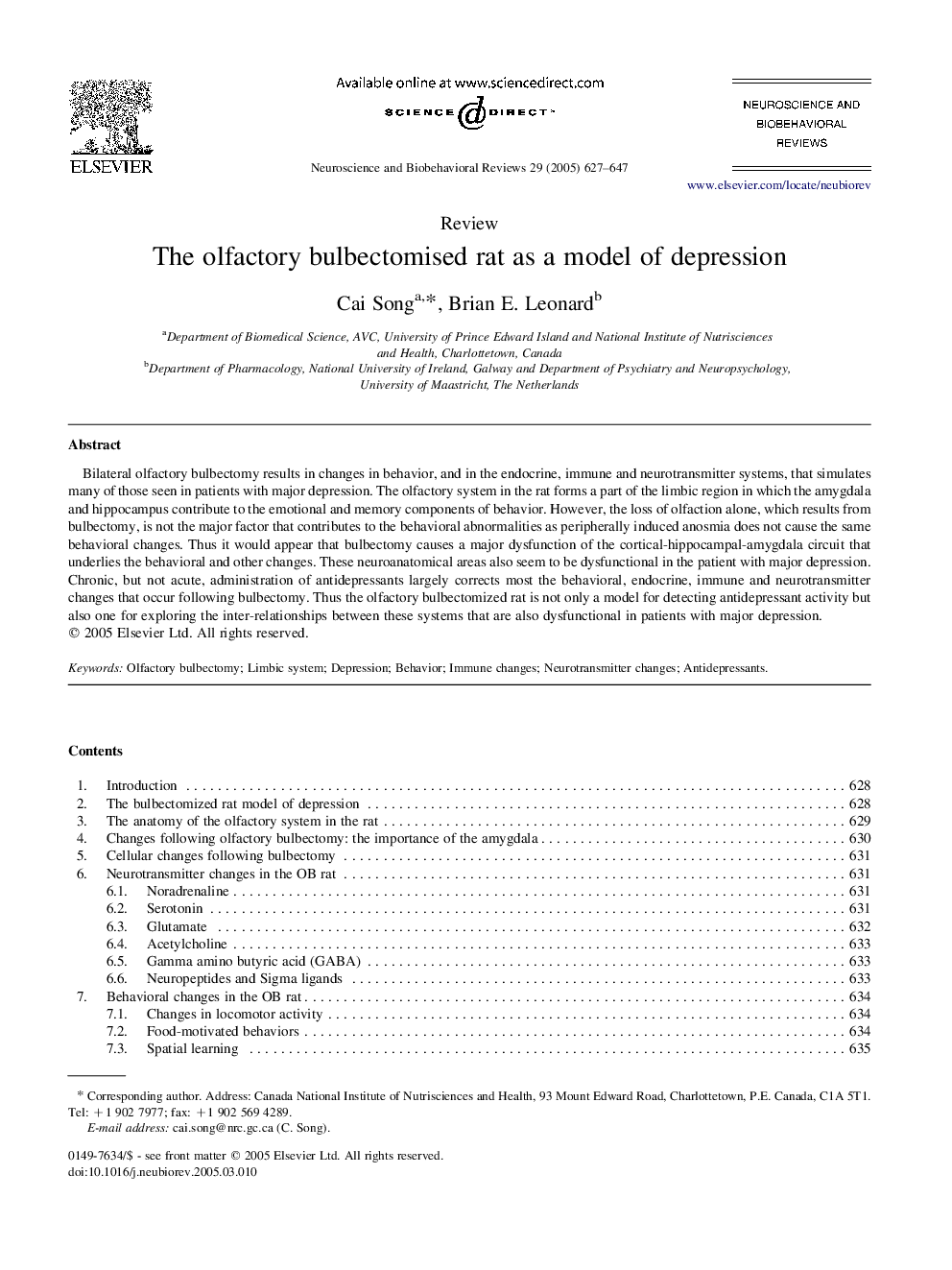| Article ID | Journal | Published Year | Pages | File Type |
|---|---|---|---|---|
| 9723587 | Neuroscience & Biobehavioral Reviews | 2005 | 21 Pages |
Abstract
Bilateral olfactory bulbectomy results in changes in behavior, and in the endocrine, immune and neurotransmitter systems, that simulates many of those seen in patients with major depression. The olfactory system in the rat forms a part of the limbic region in which the amygdala and hippocampus contribute to the emotional and memory components of behavior. However, the loss of olfaction alone, which results from bulbectomy, is not the major factor that contributes to the behavioral abnormalities as peripherally induced anosmia does not cause the same behavioral changes. Thus it would appear that bulbectomy causes a major dysfunction of the cortical-hippocampal-amygdala circuit that underlies the behavioral and other changes. These neuroanatomical areas also seem to be dysfunctional in the patient with major depression. Chronic, but not acute, administration of antidepressants largely corrects most the behavioral, endocrine, immune and neurotransmitter changes that occur following bulbectomy. Thus the olfactory bulbectomized rat is not only a model for detecting antidepressant activity but also one for exploring the inter-relationships between these systems that are also dysfunctional in patients with major depression.
Related Topics
Life Sciences
Neuroscience
Behavioral Neuroscience
Authors
Cai Song, Brian E. Leonard,
